#early modern wales
Text

In 1594 Gwen Ferch Ellis was the first person to be executed for witchcraft in Wales. Like most accused female witches, Gwen was previously known to have carried out healing of sick humans and animals in the town of Landyrnog.
Gwen was accused of having a charm written backward; something that was assumed to be a form of bewitching. Gwen was taken to Flint goal to await trial.
During her trial, Gwen was accused of having murdered a man called Lewis ap John through witchcraft and was subsequently found guilty and executed as a witch.
Unlike in England, there were very few witch trials in Wales, with only five executions having taken place. It has been estimated that 500 executions of accused witches had taken place in England during the Early Modern Period.
#witchcraft#witch#witch trials#witch craze#welsh history#medieval wales#medieval history#historyblr#historian#history student#history lover#history buff#welsh witchcraft#welsh witch#occult history#early modern history#early modern wales#tudor wales#tudor britain
9 notes
·
View notes
Text



Travel back [...] a few hundred years to before the industrial revolution, and the wildlife of Britain and Ireland looks very different indeed.
Take orcas: while there are now less than ten left in Britain’s only permanent (and non-breeding) resident population, around 250 years ago the English [...] naturalist John Wallis gave this extraordinary account of a mass stranding of orcas on the north Northumberland coast [...]. If this record is reliable, then more orcas were stranded on this beach south of the Farne Islands on one day in 1734 than are probably ever present in British and Irish waters today. [...]
Other careful naturalists from this period observed orcas around the coasts of Cornwall, Norfolk and Suffolk. I have spent the last five years tracking down more than 10,000 records of wildlife recorded between 1529 and 1772 by naturalists, travellers, historians and antiquarians throughout Britain and Ireland, in order to reevaluate the prevalence and habits of more than 150 species [...].
In the early modern period, wolves, beavers and probably some lynxes still survived in regions of Scotland and Ireland. By this point, wolves in particular seem to have become re-imagined as monsters [...].
Elsewhere in Scotland, the now globally extinct great auk could still be found on islands in the Outer Hebrides. Looking a bit like a penguin but most closely related to the razorbill, the great auk’s vulnerability is highlighted by writer Martin Martin while mapping St Kilda in 1697 [...].
[A]nd pine martens and “Scottish” wildcats were also found in England and Wales. Fishers caught burbot and sturgeon in both rivers and at sea, [...] as well as now-scarce fishes such as the angelshark, halibut and common skate. Threatened molluscs like the freshwater pearl mussel and oyster were also far more widespread. [...]
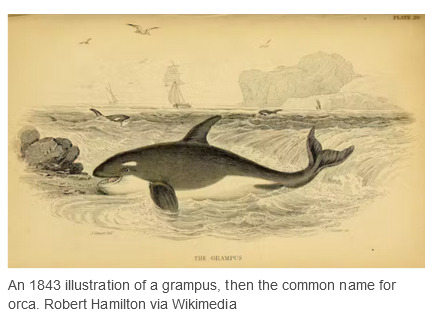
Predators such as wolves that interfered with human happiness were ruthlessly hunted. Authors such as Robert Sibbald, in his natural history of Scotland (1684), are aware and indeed pleased that several species of wolf have gone extinct:
There must be a divine kindness directed towards our homeland, because most of our animals have a use for human life. We also lack those wild and savage ones of other regions. Wolves were common once upon a time, and even bears are spoken of among the Scottish, but time extinguished the genera and they are extirpated from the island.
The wolf was of no use for food and medicine and did no service for humans, so its extinction could be celebrated as an achievement towards the creation of a more civilised world. Around 30 natural history sources written between the 16th and 18th centuries remark on the absence of the wolf from England, Wales and much of Scotland. [...]

In Pococke’s 1760 Tour of Scotland, he describes being told about a wild species of cat – which seems, incredibly, to be a lynx – still living in the old county of Kirkcudbrightshire in the south-west of Scotland. Much of Pococke’s description of this cat is tied up with its persecution, apparently including an extra cost that the fox-hunter charges for killing lynxes:
They have also a wild cat three times as big as the common cat. [...] It is said they will attack a man who would attempt to take their young one [...]. The country pays about £20 a year to a person who is obliged to come and destroy the foxes when they send to him. [...]
The capercaillie is another example of a species whose decline was correctly recognised by early modern writers. Today, this large turkey-like bird [...] is found only rarely in the north of Scotland, but 250–500 years ago it was recorded in the west of Ireland as well as a swathe of Scotland north of the central belt. [...] Charles Smith, the prolific Dublin-based author who had theorised about the decline of herring on the coast of County Down, also recorded the capercaillie in County Cork in the south of Ireland, but noted: This bird is not found in England and now rarely in Ireland, since our woods have been destroyed. [...] Despite being protected by law in Scotland from 1621 and in Ireland 90 years later, the capercaillie went extinct in both countries in the 18th century [...].
---
Images, captions, and text by: Lee Raye. “Wildlife wonders of Britain and Ireland before the industrial revolution – my research reveals all the biodiversity we’ve lost.” The Conversation. 17 July 2023. [Map by Lee Raye. Bold emphasis and some paragraph breaks/contractions added by me.]
1K notes
·
View notes
Text
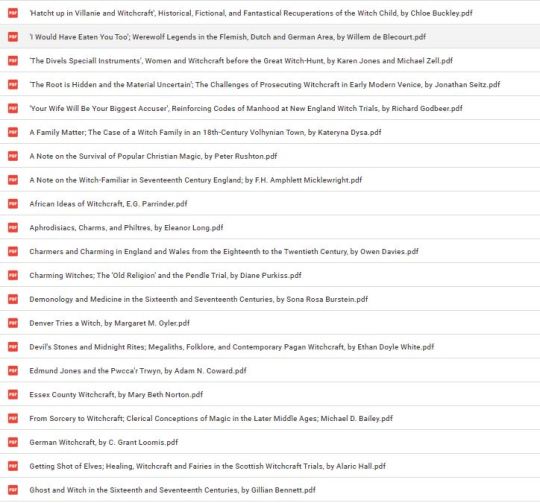





JSTOR Articles on the History of Witchcraft, Witch Trials, and Folk Magic Beliefs
This is a partial of of articles on these subjects that can be found in the JSTOR archives. This is not exhaustive - this is just the portion I've saved for my own studies (I've read and referenced about a third of them so far) and I encourage readers and researchers to do their own digging. I recommend the articles by Ronald Hutton, Owen Davies, Mary Beth Norton, Malcolm Gaskill, Michael D. Bailey, and Willem de Blecourt as a place to start.
If you don't have personal access to JSTOR, you may be able to access the archive through your local library, university, museum, or historical society.
Full text list of titles below the cut:
'Hatcht up in Villanie and Witchcraft': Historical, Fiction, and Fantastical Recuperations of the Witch Child, by Chloe Buckley
'I Would Have Eaten You Too': Werewolf Legends in the Flemish, Dutch and German Area, by Willem de Blecourt
'The Divels Special Instruments': Women and Witchcraft before the Great Witch-hunt, by Karen Jones and Michael Zell
'The Root is Hidden and the Material Uncertain': The Challenges of Prosecuting Witchcraft in Early Modern Venice, by Jonathan Seitz
'Your Wife Will Be Your Biggest Accuser': Reinforcing Codes of Manhood at New England Witch Trials, by Richard Godbeer
A Family Matter: The CAse of a Witch Family in an 18th-Century Volhynian Town, by Kateryna Dysa
A Note on the Survival of Popular Christian Magic, by Peter Rushton
A Note on the Witch-Familiar in Seventeenth Century England, by F.H. Amphlett Micklewright
African Ideas of Witchcraft, by E.G. Parrinder
Aprodisiacs, Charms, and Philtres, by Eleanor Long
Charmers and Charming in England and Wales from the Eighteenth to the Twentieth Century, by Owen Davies
Charming Witches: The 'Old Religion' and the Pendle Trial, by Diane Purkiss
Demonology and Medicine in the Sixteenth and Seventeenth Centuries, by Sona Rosa Burstein
Denver Tries A Witch, by Margaret M. Oyler
Devil's Stones and Midnight Rites: Megaliths, Folklore, and Contemporary Pagan Witchcraft, by Ethan Doyle White
Edmund Jones and the Pwcca'r Trwyn, by Adam N. Coward
Essex County Witchcraft, by Mary Beth Norton
From Sorcery to Witchcraft: Clerical Conceptions of Magic in the Later Middle Ages, by Michael D. Bailey
German Witchcraft, by C. Grant Loomis
Getting of Elves: Healing, Witchcraft and Fairies in the Scottish Witchcraft Trials, by Alaric Hall
Ghost and Witch in the Sixteenth and Seventeenth Centuries, by Gillian Bennett
Ghosts in Mirrors: Reflections of the Self, by Elizabeth Tucker
Healing Charms in Use in England and Wales 1700-1950, by Owen Davies
How Pagan Were Medieval English Peasants?, by Ronald Hutton
Invisible Men: The Historian and the Male Witch, by Lara Apps and Andrew Gow
Johannes Junius: Bamberg's Famous Male Witch, by Lara Apps and Andrew Gow
Knots and Knot Lore, by Cyrus L. Day
Learned Credulity in Gianfrancesco Pico's Strix, by Walter Stephens
Literally Unthinkable: Demonological Descriptions of Male Witches, by Lara Apps and Andrew Gow
Magical Beliefs and Practices in Old Bulgaria, by Louis Petroff
Maleficent Witchcraft in Britian since 1900, by Thomas Waters
Masculinity and Male Witches in Old and New England, 1593-1680, by E.J. Kent
Methodism, the Clergy, and the Popular Belief in Witchcraft and Magic, by Owen Davies
Modern Pagan Festivals: A Study in the Nature of Tradition, by Ronald Hutton
Monstrous Theories: Werewolves and the Abuse of History, by Willem de Blecourt
Neapolitan Witchcraft, by J.B. Andrews and James G. Frazer
New England's Other Witch-Hunt: The Hartford Witch-Hunt of the 1660s and Changing Patterns in Witchcraft Prosecution, by Walter Woodward
Newspapers and the Popular Belief in Witchcraft and Magic in the Modern Period, by Owen Davies
Occult Influence, Free Will, and Medical Authority in the Old Bailey, circa 1860-1910, by Karl Bell
Paganism and Polemic: The Debate over the Origins of Modern Pagan Witchcraft, by Ronald Hutton
Plants, Livestock Losses and Witchcraft Accusations in Tudor and Stuart England, by Sally Hickey
Polychronican: Witchcraft History and Children, interpreting England's Biggest Witch Trial, 1612, by Robert Poole
Publishing for the Masses: Early Modern English Witchcraft Pamphlets, by Carla Suhr
Rethinking with Demons: The Campaign against Superstition in Late Medieval and Early Modern Europe from a Cognitive Perspective, by Andrew Keitt
Seasonal Festivity in Late Medieval England, Some Further Reflections, by Ronald Hutton
Secondary Targets: Male Witches on Trial, by Lara Apps and Andrew Gow
Some Notes on Modern Somerset Witch-Lore, by R.L. Tongue
Some Notes on the History and Practice of Witchcraft in the Eastern Counties, by L.F. Newman
Some Seventeenth-Century Books of Magic, by K.M. Briggs
Stones and Spirits, by Jane P. Davidson and Christopher John Duffin
Superstitions, Magic, and Witchcraft, by Jeffrey R. Watt
The 1850s Prosecution of Gerasim Fedotov for Witchcraft, by Christine D. Worobec
The Catholic Salem: How the Devil Destroyed a Saint's Parish (Mattaincourt, 1627-31), by William Monter
The Celtic Tarot and the Secret Tradition: A Study in Modern Legend Making, by Juliette Wood
The Cult of Seely Wights in Scotland, by Julian Goodare
The Decline of Magic: Challenge and Response in Early Enlightenment England, by Michael Hunter
The Devil-Worshippers at the Prom: Rumor-Panic as Therapeutic Magic, by Bill Ellis
The Devil's Pact: Diabolic Writing and Oral Tradition, by Kimberly Ball
The Discovery of Witches: Matthew Hopkins' Defense of his Witch-hunting Methods, by Sheilagh Ilona O'Brien
The Disenchantment of Magic: Spells, Charms, and Superstition in Early European Witchcraft Literature, by Michael D. Bailey
The Epistemology of Sexual Trauma in Witches' Sabbaths, Satanic Ritual Abuse, and Alien Abduction Narratives, by Joseph Laycock
The European Witchcraft Debate and the Dutch Variant, by Marijke Gijswijt-Hofstra
The Flying Phallus and the Laughing Inquisitor: Penis Theft in the Malleus Maleficarum, by Moira Smith
The Framework for Scottish Witch-Hunting for the 1590s, by Julian Goodare
The Imposture of Witchcraft, by Rossell Hope Robbins
The Last Witch of England, by J.B. Kingsbury
The Late Lancashire Witches: The Girls Next Door, by Meg Pearson
The Malefic Unconscious: Gender, Genre, and History in Early Antebellum Witchcraft Narratives, by Lisa M. Vetere
The Mingling of Fairy and Witch Beliefs in Sixteenth and Seventeenth Century Scotland, by J.A. MacCulloch
The Nightmare Experience, Sleep Paralysis, and Witchcraft Accusations, by Owen Davies
The Pursuit of Reality: Recent Research into the History of Witchcraft, by Malcolm Gaskill
The Reception of Reginald Scot's Discovery of Witchcraft: Witchcraft, Magic, and Radical Religions, by S.F. Davies
The Role of Gender in Accusations of Witchcraft: The Case of Eastern Slovenia, by Mirjam Mencej
The Scottish Witchcraft Act, by Julian Goodare
The Werewolves of Livonia: Lycanthropy and Shape-Changing in Scholarly Texts, 1550-1720, by Stefan Donecker
The Wild Hunter and the Witches' Sabbath, by Ronald Hutton
The Winter Goddess: Percht, Holda, and Related Figures, by Lotta Motz
The Witch's Familiar and the Fairy in Early Modern England and Scotland, by Emma Wilby
The Witches of Canewdon, by Eric Maple
The Witches of Dengie, by Eric Maple
The Witches' Flying and the Spanish Inquisitors, or How to Explain Away the Impossible, by Gustav Henningsen
To Accommodate the Earthly Kingdom to Divine Will: Official and Nonconformist Definitions of Witchcraft in England, by Agustin Mendez
Unwitching: The Social and Magical Practice in Traditional European Communities, by Mirjam Mencej
Urbanization and the Decline of Witchcraft: An Examination of London, by Owen Davies
Weather, Prayer, and Magical Jugs, by Ralph Merrifield
Witchcraft and Evidence in Early Modern England, by Malcolm Gaskill
Witchcraft and Magic in the Elizabethan Drama by H.W. Herrington
Witchcraft and Magic in the Rochford Hundred, by Eric Maple
Witchcraft and Old Women in Early Modern Germany, by Alison Rowlands
Witchcraft and Sexual Knowledge in Early Modern England, by Julia M. Garrett
Witchcraft and Silence in Guillaume Cazaux's 'The Mass of Saint Secaire', by William G. Pooley
Witchcraft and the Early Modern Imagination, by Robin Briggs
Witchcraft and the Western Imagination by Lyndal Roper
Witchcraft Belief and Trals in Early Modern Ireland, by Andrew Sneddon
Witchcraft Deaths, by Mimi Clar
Witchcraft Fears and Psychosocial Factors in Disease, by Edward Bever
Witchcraft for Sale, by T.M. Pearce
Witchcraft in Denmark, by Gustav Henningsen
Witchcraft in Germany, by Taras Lukach
Witchcraft in Kilkenny, by T. Crofton Croker
Witchcraft in Anglo-American Colonies, by Mary Beth Norton
Witchcraft in the Central Balkans I: Characteristics of Witches, by T.P. Vukanovic
Witchcraft in the Central Balkans II: Protection Against Witches, by T.P. Vukanovic
Witchcraft Justice and Human Rights in Africa, Cases from Malawi, by Adam Ashforth
Witchcraft Magic and Spirits on the Border of Pennsylvania and West Virginia, by S.P. Bayard
Witchcraft Persecutions in the Post-Craze Era: The Case of Ann Izzard of Great Paxton, 1808, by Stephen A. Mitchell
Witchcraft Prosecutions and the Decline of Magic, by Edward Bever
Witchcraft, by Ray B. Browne
Witchcraft, Poison, Law, and Atlantic Slavery, by Diana Paton
Witchcraft, Politics, and Memory in Seventeeth-Century England, by Malcolm Gaskill
Witchcraft, Spirit Possession and Heresy, by Lucy Mair
Witchcraft, Women's Honour and Customary Law in Early Modern Wales, by Sally Parkin
Witches and Witchbusters, by Jacqueline Simpson
Witches, Cunning Folk, and Competition in Denmark, by Timothy R. Tangherlini
Witches' Herbs on Trial, by Michael Ostling
#witchcraft#witchblr#history#history of witchcraft#occult#witch trials#research#recommended reading#book recs#jstor
2K notes
·
View notes
Note
The disrespect toward indigenous peoples is what popped put at me today in one of your posts. I wonder how long the English have been looking down on the Welsh. We're the Saxons like that or is it the Normans who really thought they were better than everyone else. Cause it seems like it goes back a long way.
Oh, both, just in different ways. The Normals were imperialist, the Saxons were more theft and landgrab.
Something that makes me want to start hurling knives is the INCREDIBLY COMMON English myth that the Anglo-Saxons were a sweet innocent indigenous British people who were conquered and bullied by those mean nasty Normans (and Vikings), and because the Normans came over via France, that means everything was actually THEIR fault, and the true English i.e. the Anglo-Saxons, were victims too :(
When I say it's incredibly common, by the way, I really mean it. Enormous numbers of modern day English people believe this. I've seen BBC programs about the Viking invasions that claimed without a trace of irony that the Vikings would take slaves from "the native Anglo-Saxons". I've literally had English people comment this shit on posts of mine about Celtophobia and Welsh history. Like I'm there describing how the last Prince of Wales was locked in a wooden cage in Bristol Castle at the age of eight and lived out the remainder of his life there until his fifties so the Welsh would know their place, and some snivelling English cunt will straight up write a message going "Teehee really it was the Normans not the English though and they conquered the poor Anglo-Saxons too, poor England uwu"
Anyway in the dying days of the Roman empire in Britain one of the leading reasons for Rome abandoning Britannia was the constant waves of Anglo-Saxon invaders. There were so many the east coast of Britain became known as the Saxon Shore. There were so many the Romans built a line of forts that were and are literally called Saxon Shore Forts. There were so many that an official, historically documented, paid governmental position in Roman Britain was the Count of the Saxon Shore, i.e. the guy responsible for keeping the bastards out.
Rome had banned native military, of course, so when they then withdrew and took the armies with them, the people left had no defences against the incoming waves of Angles, Saxons and Jutes. England fell pretty quickly, Angles in the north, Saxons in the south, Jutes primarily in the east, I believe. What stopped their westward expansion was the Brythonic Celtic nations living in modern day Wales. And this is the origin of the Welsh dragon - those separate kingdoms needed a banner that united them, and represented Not Saxon. An anti-Saxon force. They chose a red dragon.
This is also the origin of King Arthur. An anti-Saxon king of the Brythons, who would repel these Germanic invaders. (It was several centuries later that England realised they should probably steal the term 'British', because otherwise they were marking themselves as 'not native'.)
Anyway the saving grace of the Anglo-Saxons in the end was actually that they were whiny little bitches who gave up trying to fight in Wales with its difficult mountains and fought each other instead. The whole sorry tale of the Heptarchy is the various Anglo-Saxon kingdoms fighting like cats in a bag, while Saxon king Offa built a dyke along the Welsh border and went "WELL YOU'RE NOT ALLOWED OVER HERE" and every Welsh king went "...we literally didn't want to conquer you anyway, you spectacularly sad and stupid man"
Oh, and of course, there's the name 'Wales'. Given to us specifically by the Anglo-Saxons. And translated by centuries of English scholars, mostly very smugly, as 'foreigners'. A fun bit of early propaganda, look - foreigners in our own country that they tried and failed to steal.
All of which is a circuitous way of saying - yeah, it goes way back.
2K notes
·
View notes
Note
"Yet you toil still in service to men. Your father, your husband, and your son. You desire not to be free but to make a window in the wall of your prison."
Episodes 9
What's your opinion on the speech?
Rhaenys' speech here is a bit silly. What woman doesn't "toil in service to men" in this world? Medieval women were not even allowed to own property or sign contracts. Part of this show's problem is that some of the writers seem to be under the impression that Westeros is undergoing a feminist movement and Alicent is "team patriarchy" while Rhaenyra is "team feminism," as if Rhaenyra's own "right" to rule doesn't derive specifically from a man, her father, granting her that right, as if that same man couldn't snatch it from her on a whim. She has to toil in service to her own father, and even if she becomes queen, she will find herself surrounded by and beholden to men who will very quickly remove their support if she does not dance to their tune, and in fact we see this in the Dance, where Rhaenyra has terrible advisors but she's not really able to remove them because she can't risk them going over to the other side. And when she does attempt to assert herself against them, this is precisely what they do.
I think many people don't understand that the idea of women as an oppressed group, with solidarity across class lines, religious lines, and ethnic lines, that is, intersectional feminism, is extremely modern. Rhaenys cannot separate herself from her class interests, she lacks even the most basic framework necessary to do so. She might see her sex as a prison, but her greater allegiance would be to the Targaryen royalty that she was born into. Breaking free from the prison of patriarchy would mean also being metaphorically exiled from her own royal privilege. When it came to the council of 101, Rhaenys did not risk alienating herself from her grandfather the king in order to assert her right to the throne, instead she put forward her son Laenor as an alternative. In her marriage with Lord Corlys, she deferred to him rather than risk her status as Lady of Driftmark. Rhaenys did not pit herself against the might of the patriarchy because it would mean pitting herself against the might of the monarchy itself.
This isn't a criticism of Rhaenys. She only did what most women in her position would have done. She did not have what Rhaenyra had, the mandate of a king who had thrown the might of the monarchy behind her cause, declaring her an exception. Viserys did not sign a decree asserting absolute primogeniture because he could not pit the monarchy against the patriarchy when the monarchy itself relied on the patriarchy to uphold it. And in our world, knowing that monarchy and patriarchy waled hand in hand, many medieval/early modern queens regnant very much avoided overly associating themselves with womenhood, instead leaning into the rhetoric that they were female in body, but male in spirit. They believed that as exceptional women, they might claim a sort of honorary male status. Think of Elizabeth I's speech to the troops at Tilbury as they prepared to face the Spanish Armada, when she said:
"I know I have the body of a weak and feeble woman; but I have the heart and stomach of a king, and of a king of England too..."
Notice how she concedes the point about her "weak and feeble" woman's body? She then goes on to say that she has the heart and stomach not of a man, but of a king, aligning herself not only with manhood, but with royalty, which is the source of her exceptional status. And this is echoed in the idea of Rhaenyra seeing herself as an exception, when Lord Corlys reminds her that if she allows women to inherit the seats of Stokeworth and Rosby, she may lose the support of lords who took her side. They were siding not with a woman because they believed in smashing the patriarchy, but rather they were siding with monarchy, believing Rhaenyra had the mandate of the old king. However that mandate could be revoked if Rhaenyra were to turn against the patriarchy and attempt to divorce it from the monarchy.
So the ironic thing is, Rhaenyra is doing very nearly the same thing Rhaenys is accusing Alicent of doing, except if womanhood is a prison, then perhaps rather than building a window in the prison, Rhaenyra has secured parole for good behavior. She could be put back into the prison at any time and is keenly aware of that. The prison of patriarchy, after all, still exists within the walled confines of feudal monarchy, and neither Rhaenys nor Rhaenyra are attempting to climb those walls.
#asks#hotd critical#rhaenys targaryen#anti rhaenyra targaryen#anti team black#but not really#team green
115 notes
·
View notes
Text
I must have lost my mind... my comprehension... or priorities.
I am truly reeling. Fully, and by all sides of the arguments over a photo. There has not been so much of a bruhaha since the hordes of humanity were storming stores in search of toilet paper. It truly is blowing my mind.
Okay trying this again after once before as a Reblog to another today. But I have a few things to say and then I am going to leave this lay. I have NO idea if this will be long or short. But I am dang well hoping I feel better afterwards.
So there I was this afternoon, early, the phone rings. And it is my daughter-in-law whom has not called me since the second week of November. I see her name on the caller id, take a deep breath, and... she wants to talk about Catherine. What???? How about home, hearth, family, and the state of relationships? But okay. I went with it.
I am going to start this, what I hope is a mini-vent off with what I think of the photo submitted first. There is NO doubt it was a huge blunder. The week proceeding was already a fire storm demanding proof of life, relationship, and just about everything else you could throw into the mess. This was no time to release anything touched up whatsoever, and even for myself who loves and supports this wonderful person... the lack of wearing at the least her wedding band was just not a good look to send out worldwide. I do not care WHEN she wears or does not her dang rings privately. But now was not the time. I do believe she had good intentions and was just being naive. But she has been around the block for over two decades and firmly involved and in the trenches to what amounts to a modern-day War of the Roses.
Someone did not have her back.
Now to my main points, real concerns, and what are the TRUE problems, according to just little me, sitting in my cheap director's chair and calling out the scenes currently playing on the world stage.
People. This is going to pass. This is just the latest in the drama and the saga since Meghan Markle hit the royal family. The real danger from my view is not the photo or Catherine's intentions. The escalation and apparent hysteria of what could be real danger is truthfully what is my focus. When news agencies are checking the place of origin, metadata, timestamps, editing, and making judgements on integrity and the future of the monarchy based on a simple photo for Mother's Day... we have a HUGE issue. It is now far past time for the Wales family to be better secured, the British government to step in and take care of the obvious dangers that are growing exponentially, and priorities addressed as to the future.
I am FAR more concerned about William and his family at this point being safe, secure in where they are living, and the future of each of them an absolute priority. It is time for all involved with their protection and well-being to deal with what is so obviously happening. And I feel for William who most likely has the world, literally, on his shoulders. But it is for him to take the first stand.
This is not about a photo. This is a shot over the bow on the global stage.
Catherine dearest. Just heal please. Take care of you first. I will continue to keep you close in thought. You have given everything in honor, love, and duty for over 20 years. You take the time you need.
Going to publish this bad attempt at writing I suppose. Hope the madness ends soon. And I do not mean about a simple picture meant as a greeting to Mother's around the world...
105 notes
·
View notes
Text
"Rule Britannia is out of bounds" - How England invented Great Britain
("Rule Britannia is out of bounds"- Life on Mars, David Bowie, 1971)
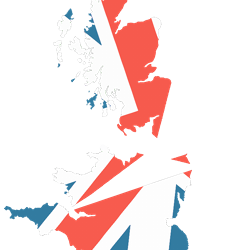
As promised, here is a more in-depth exploration of Wales' relationship to indigeneity or colonised status. And how England created the (political) concept of Great Britain when it formally annexed Wales in 1542. This is a long post but I will try and be brief where possible to do so. I graduated with a degree in Celtic Studies last year from Aberystwyth University so it's time to put that to use.
In my last post, I went over the groundwork for this conversation - so if you haven't read that one yet I strongly suggest you read that one first then come back to this one. In that first post, I establish the stickiness in claiming or applying the status of colonised onto the modern nation and people of Wales. I also explore how claims of indigeneity (intended to legitimise Welsh nativism through dubious claims of descent from the Iron Age Britons) are weaponised in modern political contexts.
With all that said - how does one categorise the suffering of Wales/its culture and language without straying into the language of the colonised?
Early Medieval English Imperial desire for Wales:
Very often, you will hear people make the claim that Wales was 'England's first colony' and that the other nations bordering England were guinea pigs for Britain's later colonial empire. My previous writing on this topic has established the difficulty in applying colonised as a term to Wales and its context. Which leads to the question of what do we describe it as instead?
For this, we need to make a distinction between colonialism and imperialism.
The two concepts are very similar (and do overlap slightly) but they have crucial differences which allow us to be more precise and succinct with our wording which aids both communication of the subject and quells misunderstanding through language which doesn't fit the situation.
Put simply, Imperialism is when one country, people or nation desires to extend power over another (usually a close-by or neighbouring territory) - especially (but not solely) through the means of expansionism.
Colonialism is also when a country, people or nation wants to extend power over another - but primarily through invasion and typically (but not always) against territories that are further afield and not immediate neighbours).
A lot of the way in which we view early British history in Wales is tinged with a kind of exceptionalism for what happened between England and Wales. Very often, what was done is framed as uniquely terrible for the time and held up as a poster child for the unique evil of England's expansionist desires. Yet all over Europe at the same time this was happening - other European nations and peoples were engaging in the same subjugator-subjugatee relationship. The exceptionalism present in framing Wales as uniquely suffering in this period is, unfortunately, borne out of the same British imperial culture which was thrust upon it and has become irrevocably entwined with culturally. It is a kind of British arrogance (which ironically crops up in anti-British arguments in Welsh independence activism) which presupposes nobody could have suffered the same or worse than they have, which demands the active ignorance of other, contemporary examples of that which they claim to oppose.
Wales was the first victim of English (later British) Imperialism - not its first colonial victim.
The build-up to and annexation of Wales by England:
Wales was annexed twice - once before the age of states and once shortly before that age dawned. The concept of states (as in, sovereign countries) didn't really exist until after the Treaties of Westphalia (1648). In which the concept of non-interference in the religious affairs of other countries (and other domestic affairs) was established and international relations was born. This is relevant to Wales' situation - as what England did to Wales happened long before the age of states began.
There was the Conquest of Wales by Edward I between 1277 and 1283. (Before that, the Norman Conquest of Wales by 1081). (However, the latter being conducted by the Normans is not necessarily equatable to the actions of England the country, which itself had only just been invaded by the Normans). And then the Laws in Wales Acts which formally incorporated Wales into the realm of the Kingdom of England in 1542.
The Conquest of Wales by Edward I overran the territories of the last Prince of Wales (from the Welsh monarchic tradition), Llywelyn the Last and divided the territories into Welsh Principalities and Marcher Lordships. This setup remained until 1542, when Henry VIII passed the Laws in Wales Acts and formally annexed Wales and made it (in all the legal senses) a part of England.
By the time international relations was in its infancy (i.e. shortly after the Peace of Westphalia) Wales had been absorbed into England for just over 100 years. The relevancy of this is that Westphalia had been about religious liberty - Henry VIII's incorporation of Wales into the Kingdom of England was partly informed by religion. Henry VIII had just broken away from Rome and established the Protestant Church of England, whereas Wales was still largely Catholic. The Laws in Wales Acts also replaced the language of the courts in Wales with English, cutting off monolingual Welsh speakers from legal representation. The language of worship became English instead of Latin. Wales was culturally assimilated into England over a long period of time. And that meant ensuring Wales followed the 'correct' religion and spoke the 'correct' language. After the Peace of Westphalia, these actions by Henry VIII to bend Wales to his new religion and to assimilate Wales into England would have been in poor taste or decried in light of the new Westphalian system that was developing in Europe. Alas, these events took place before then and temporally speaking, Wales was locked out of this recourse.
By contrast, Scotland was unified with England into the Kingdom of Great Britain in 1707 (after the Peace of Westphalia). England committed numerous acts of cultural erosion and destruction against Wales and Scotland at this time - but its Union with Scotland differs to that with Wales. Wales was incorporated into England, whereas Scotland was 'invited' to join a union between England (which then included Wales) and itself. Simplifying it greatly - like a marriage proposal in which the two spouses are *supposed* to be equals. After the Act of Union with Scotland, the whole island of Great Britain was 'unified' and thus the Kingdom of Great Britain was formed from two states - England (inc. Wales) and Scotland into one state.
Welsh Nationalism and Nationhood as separate from Statehood:
Wales and Scotland were the victims of English imperialism in many similar, but also many different ways.
Wales, having never been a 'state' was unable to acquire this status since it had long been incorporated into England by the time the concept of states had developed. Wales was unlucky in this way, because other nations on this island such as Scotland had managed to establish themselves long enough to survive into the age of states and thus became one. Because of this, Welsh nationalism cannot look to an era in which it was a free state because that did not happen. Instead, Welsh nationalism very often looks back with rose-tinted spectacles to Wales prior to Edward I's conquest and/or prior to Henry VIII's Laws in Wales Acts.
But nationhood and statehood are not the same thing - and it is the conflation of these two concepts (like the conflation of colonialism and imperialism) which has led to much of the confusion on these topics. Nationhood is acquired by a group of people who share several of these things: a common language, history, culture and (usually) territory. Not all of these things are required, but most nations have all or almost all of these qualities. Wales has a language (Welsh), a common history, culture and territory (Wales). Statehood is acquired by an association of people who have most or all of these things: formal institutions of government, laws, permanent territorial boundaries and sovereignty. Wales before 1283 very loosely had government and laws (monarchy and Laws of Hywel Dda) but had no permanent territory due to the conquest and lost some sovereignty in 1283 and total sovereignty in 1542.
Even if Wales had met all the criteria for a state in 1283, it would not have been eligible to become one - no nation in the world was able to do that yet because the concept (or proto-concept) for it would only be invented in 1648. Even England did not qualify for state status yet. Put simply, Wales got very unlucky with history and geography in such a way which prevented it from having a historical statehood post-1648 like neighbouring England and Scotland.
Naturally, when Welsh nationalism attempts to recall a past in which it was a 'state' - it is always an imagined and romanticised history. A fantasied history which generates ideas of the persecuted 'indigenous' Cymro where it shouldn't really be (in all seriousness, the injustices inflicted upon Wales by England are enough - extra additional injustices reliant upon a claim to to 'nativeness' do not need to be invented in order to be taken seriously). In the modern world, claims of nativeness in a European context are fraught, misguided, in poor taste and often copy the homework of the indigenous peoples those same European powers marginalised or colonised. In the modern world, a white Welshman claiming indigeneity is doing so in a postcolonial world and there really is no escaping that. Succinctly - the Welsh nationalist who relies upon a created sense of nativeness can only do so by drawing upon the work of marginalised native peoples living in parts of the world formerly colonised by Great Britain. To claim native status as a Welshman is to misunderstand and misappropriate history while wielding the language of the genuinely colonised while contributing nothing to it. It is purely extractive and a slap in the face of non-European native peoples everywhere. The pining for this return* to a prior point in Wales' history where it was a fully functional, sovereign nation populated only by 'native' or 'indigenous' Cymry is an alarming and ahistorical fantasy that all too easily slides into ethnonationalism and nativism -ancient or modern.
(*the choice of the word 'return' here is no accident - the desire to 'return' is inextricably linked to the alt-right dogwhistle 'retvrn' and it it is frighteningly common to see elements of that subculture crop up in Welsh nationalist calls to return to a point in Wales' history where it was 'sovreign'.)
Welsh nationalism which isn't vigilant to this kind of thinking very often will find itself arguing blatant untruths. For example, on the milder side of fake history, I've come across Welsh nationalist groups claiming symbolism from Owain ap Gruffydd's coat of arms - despite the fact he lived before the age of heraldry and he never used these arms because they were attributed to him later.

What next for Wales after 1542?:
Since Wales was fully and formally incorporated into the Kingdom of England by 1542, English colonisation of the Americas prior to 1707 naturally included Welsh colonists as well as English colonists. After 1707 Scots joined in with the now British colonisation of the Americas (both as/for/on the side of the Brits and as Scots fleeing Scotland after the Act of Union decimated Scottish Gaelic traditional culture). The Welsh, on the other hand, were more intimately involved with the colonisation of the Americas before that.
Though England spearheaded its colonisation of the Americas, Wales was not an unwilling participant dragged along by its association with and incorporation into England - Welsh colonisation, like Scottish colonisation, was often motivated by religious or cultural persecution - of which colonisation of another land was a possible solution to cultural loss in their home countries. Pennsylvania was settled by many Welsh Quakers and the idea of a Welsh Tract was floated to the Welsh settlers in 1684. The idea was to create a county which would operate in the Welsh language and serve as a vehicle for the preservation of the Welsh language. This attempt was not as successful as Wales' colony in Patagonia, Argentina in which native populations there were displaced at the behest of the Argentinian government - who needed the land settled and cleared. Welsh colonists took up this mantle and created Y Wladfa colony there in 1865.
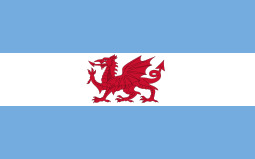
Returning to the 17th Century - Welsh people were active colonists in the Americas during this time - motivated by saving the Welsh language and freedom of religion (especially the developing Nonconformist denominations of Protestant Christianity developing at this time). It was not so much that England was forcing Wales to participate in its colonialism, but that Wales has its own wants and ends for colonialism and was motivated entirely on its own grounds.
Back at home, Wales was still hard-done-by due to England - but two things can be true at once. Wales was a victim of English imperialism, but was also a perpetrator itself of colonial violence against Native Americans. England was no such victim of imperialism of any kind and the power dynamic for England had always been one rooted in absolute expansionism.
Summary and Conclusion:
With all of that said - if you were to ask point blank if I feel it is appropriate or okay for Wales to claim it was colonised by England and that Welsh people are in some way, more indigenous to the island than any other people living here - my answer would be no, I don't think it's okay.
I can't stop people from thinking otherwise, but I can reason that perhaps we shouldn't appropriate the struggles of people marginalised by the very nation we are talking about in order to craft a victimhood which is entirely unnecessary. Wales was a victim of English imperialism - but Wales was also an active colonising European nation. In the modern world, people are thankfully more willing to listen to the wants and needs of victims of colonialism - particularly victims of British colonialism in the Americas, Oceania and Asia. But I would warn against Welsh nationalism which seeks to capitalise on that increase in indigenous visibility in order to add legitimacy to itself (necessitating the crafting of an 'indigenous' narrative which did not exist there before). We live in the modern world where indigenous peoples are being taken more seriously than in centuries past - but that does not mean the only peoples hard-done by being taken seriously are colonised indigenous populations.
I believe it comes from a deep seated insecurity within Wales in which it is not uncommon to feel like Wales is being left behind because of all of this advancement. And this insecurity manifests as rejection of anything not obviously Welsh or demonstrably 'home-grown'. It's the national equivalent of a survival mechanism - but this is detrimental not only to the cause of Welsh nationalism, but to Wales itself. I've had people say to me (and I have read in historical sources from the last 100 years in Welsh) that the LGBTQ+ movement is actually an English invention created to erode Welsh traditional culture. Or variations on that rhetoric in which it is immigrants or other minorities which are made into this boogeyman come to destroy Wales and all Welsh ways of life. And it is so demonstrably not true but also bitter to see from the hearts and minds of my fellow Welsh speakers/Welsh people. Who have been hurt so much by the historical erosion of their culture that they confuse non-threats for threats and can only resolve to obtain some more legitimacy by appropriating the language of nativeness and colonisation in this ever changing world which, right now, is listening to native peoples for once.
It's difficult to put into words, even with all of the background knowledge above - but Wales is valuable and legitimate all on its own and doesn't need to rely upon things which isn't serving it - like ethnonationalism and nativism.
I want to live in a Wales which is uncompromising not only in its own fight for recognition and respect - but for other nations and peoples' fights for the same as well. I want to live in an independent Wales which is an ally to all those who share Wales' struggle and a Wales which rights the wrongs of its past without hesitation or compromise.
Would you rather a Wales for the few or a Wales for all who call it home?
#cymraeg#welsh#wales#cymru#ethnonationalism#cymblr#nativism#indigenous#native#indigeneity#nativeness#tags for relevance#celtic nations#celticist#I know there's so many more things I could say or could add but this post is so long already#granted it's evidence this conversation sorely needs to happen#so if you have any additions or thoughts please reblog or reply in the tags#and reblog this post so that more people have a chance to read it#diolch pawb#long post
133 notes
·
View notes
Text
The East India Company ships
The East and West India Company ships were not ship types in the usual sense. They were generic terms for a series of merchant ship types that travelled between Europe and the overseas colonies in the East and West. Common features of these ships were three masts, several cannons and a high bulwark to make it more difficult for attackers to board them. Their valuable cargo made the ships attractive targets, so they often travelled in convoys, accompanied by medium-armed merchant ships or frigates for protection. But let's go into more detail.

The East Indiaman 'Earl of Abergavenny', off Southsea, by Thomas Luny 1801
The ships of the East India Company were the ships of the English East India Company, a public limited company (shipowners at the early time of the East India Company contributed their ships to the company and received a certain share in the company in return. They received a proportionate share of the company's overall profits and received a dividend even if their own ship was lost, since the 18th century the company build their own ones as well.) which traded with Asia from 1600 to 1834. The company had a monopoly on trade with the East Indies, China and other regions, and its ships carried goods such as spices, tea, silk, cotton, porcelain and opium. The company also played an important role in the colonisation and administration of India and other territories.

East India Company ships at Deptford, by English School, c. 1660
The ships of the East India Company were known as East Indiamen or as Indiamen and were among the largest and most modern of their time. They were designed to withstand long voyages, carry heavy cargoes and defend themselves against pirates and enemy ships. They were also equipped with cannons and muskets and had a crew of sailors, soldiers, officers and passengers. Because of the need to carry heavy cannons, the hull of the East Indiamen - like most warships of the time - was much wider at the waterline than on the upper deck, so the guns on the upper deck were closer to the centreline to increase stability. This is known as a tumblehome. The ships usually had two complete decks for accommodation within the hull and a raised aft deck. The aft deck and the deck below were lit by galleries with square windows at the stern. To support the weight of the galleries, the hull lines were full towards the stern. As mentioned above, the ships were armed and painted to look like a warship and an attacker could not be sure if the embrasures were real or just painted, and some Indiamen carried a substantial armament.
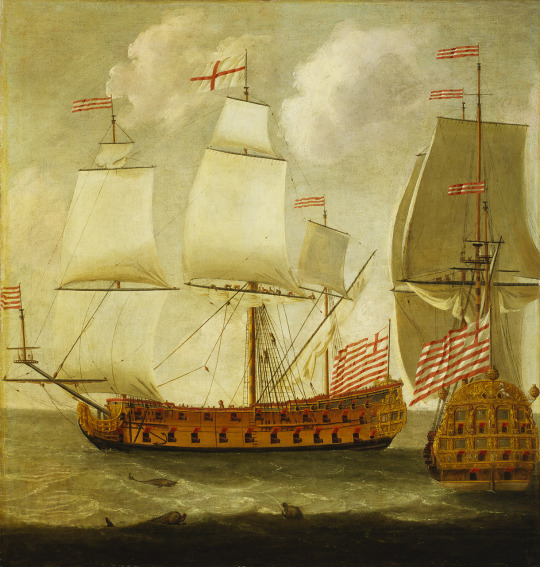
Two views of an East Indiaman of the time of King William III, by Issac Sailmaker, 1685
The Royal Navy acquired several East Indiamen during the Napoleonic Wars and made them fourth rate ships (e.g. HMS Weymouth and HMS Madras), perpetuating the confusion of military ships with merchant vessels as prizes. In some cases, the East Indiamen successfully fended off attacks by the French. One of the most famous incidents occurred in 1804 when a fleet of East India ships and other merchant vessels under Commodore Nathaniel Dance successfully fought off a squadron commanded by Admiral Linois at the Battle of Pulo Aura in the Indian Ocean. And during this time, some of the ships were even travelling under the protection of a Letter of Marque, which allowed them to make their own prizes.

The East Indiaman 'Prince of Wales' disembarking troops off Gravesend, 1845, by John Lynn, 1845 or later - She was built by Green's of Blackwall in 1842 to a design known as that of the "Blackwall Frigates" - Indiamen with the single-decked appearance of frigates.
The ships of the India Companies were not only involved in trade, but also in exploration, diplomacy, warfare and scientific research. They visited many harbours and islands, built factories and forts, fought in battles and wars, negotiated treaties and alliances and collected samples and data. With the advent of the smaller and faster Blackwall Frigates in 1834 came the end of the great Indiamen as these small frigates sailed much faster.
#naval history#east and west india company#ships#1600-1834#blackwall frigate#age of sail#merchant vessels
94 notes
·
View notes
Text
bundletober #17: ASCENT
i am going to catch up with these... tomorrow. or at some point afterwards. Society. anyway today's bundletober i'm looking at ASCENT, a trophy incursion by ex statis games--hey they're from wales? that rules

so for those who have not played trophy, it is a set of very closely connected games -- trophy dark and trophy gold -- about OSR-style adventurers who are doomed to die horribly in a wretched world that corrupts them. it bridges a lot of interesting gaps between OSR stuff (no classes, emphasis on modules and prewritten dungeons, encouraging a thinking puzzle-solving approach from players) and storygame stuff (handing some level of narrative control off to players, failing forward, mixed successes and fiction-first approaches). the main difference is how doomed the player characters are--trophy gold player characters will only probably die, while trophy dark characters are the most doomed motherfuckers to ever briefly walk this earth.
an 'incursion', then, is a module or an adventure to be run in trophy. something i really like about trophy is that it encourages its incursions to have 'themes'. a lot of trophy incursions will have a list of 'moments', little pieces of set dressing a GM can describe to bring that theme across. i love this shit because i think that everyone agrees it sucks when the GM reads out like fifteen paragraphs of prewritten text from the module but it is also nice to have some guidance or a handrail--this provides a lot of really cool interesting little moments without being overbearing or handholdy. the theme of ASCENT is 'EXPOSED' and the moments reflect this beautifully:

this shit is sublime. the meat of the incursion is its 'rings', descriptions of the progressively darker and bleaker dangers your characters face. the rings in ASCENT are beautifully put together, each one telling its own miniature story. ASCENT also hews very close to trophy's storygame side, giving the GM probing questions to ask the party at each ring:

i really like the inversion of the classic "dungeon", the fact that instead of delving deep underground each progressive increase of danger takes place in the context of scaling a mountain, exposed to the elements, the very sky at your back becoming your enemy. i love almost everything about ASCENT--but when it comes to it, without wishing to spoil--i find the ending a little disappointing. not bad disappointing, just--when taking into the consideration the very real practices of mountain climibing in the modern day, the everest expeditions of old that this seems to be taking some inspiration from, it ends in a very generic and unconsidered OSR loot-the-ancient-relic-with-a-twist setpiece.
it's not a bad ending so much as a missed opportunity to mediate on shit like the environmental destructin to mount everest caused by tourism, or the grisly monument to pointless thrill-seeking death that is rainbow valley, or the failure to credit sherpa guides for the success of early expeditions in favour of showering praise on white colonialists. or, hell, even just to do something a bit more on-theme. it doesnt' feel very EXPOSED, is all i'm saying.
ASCENT is available for purchase as a digital download through itch.io
76 notes
·
View notes
Text
marauders!au where the war never happened and they all got to go on and live happy lives :) its set years later, when Harry, Ron, Neville, Luna and Hermione are going into their first year.
I haven’t come up with an actual plot yet :/ but this is the setting, and they are all around their early-to-mid-thirties at this point. it's likely just domestic fluff and slice-of-life type shit, with Harry still getting into impossible amounts of fuckery whilst stressing at least 10 different adults (as he should tbh)
i can't decide whether this is set in the 90s or in the modern!era so i left it ambiguous
Barty Crouch Jr, now Professor Barty (just Barty, Crouch is my father), teaches DADA and his fiancé, Evan Rosier, is a Magizoologist who travels during the school year, comes back home for the holidays and weekends to spend with Barty, either on Hogwarts grounds or at their own home.
Barty has a close friendship with McGonagall, who is Headmistress, and Poppy (who are married, but no one figured it out).
Dorcas and Marlene play International-Level Quidditch: Dorcas for England, and Marlene for Wales or Ireland (undecided). Everyone thinks they hate each other from the way they treat each other during games.
They played for the Holyhead Harpies until they got recruited, and their wedding was basically the biggest, most dramatic and over-the-top graduation party Hogwarts had ever seen, hosted in the Potter Manor. everyone was hungover for days afterwards
Lily and Snape are best-friends-turned-rivals, who achieved a Mastery in Potions at the same time, and are both the youngest people to ever do so.
Sev specialises in theoretical potions, and Lily specialises in experimental work, altering old potions and creating new ones. She commandeered the entire basement for her own potions lab, and Remus helps her research in his spare time.
Pandora started publishing with Xenophillius (the definition of gender-fuckery; no-one knows how they identify, not even Xeno), and they publish the most outlandish work they can, alongside Pandora’s books!!
They also run Xeno's Quibbler and a couple other independent newspapers. They live out in the countryside w/ Luna. Barty & Evan are their only walking-distance neighbours, but they floo to their friends houses semi-regularly
MaryLily and StarChaser are co-parenting Harry, and being godparents/family friends of Draco, Blaise Zabini, Ron, Neville and Luna.
When Harry is at pre-school, he makes friends with Hermione, and the four of them introduce Dr and Dr Granger to the magical world over the years, instead of the two month crash-course Hogwarts gives
Mary is an artist, and since she was raised half-blood, absolutely adores the technique and process of muggle painting, later enchanting it to move and learn and talk. She doesn't own anything that isn't stained with paint, bleach or hair dye.
She is famous for her work, in Magical and Muggle circles, but is almost completely anonymous, and they only know what she looks like because of a group portrait she painted
Regulus is an independent researcher of old Pagan traditions and 'Muggle' magic, how different solstices and days (like All Hallows Eve) affect the Magical community, etc.
He visits Barty at Hogwarts with Harry every few weeks, and later with Hermione as well, so they grew up learning about the secrets at Hogwarts, in the library, and with the teachers. Also friendly house rivalry, and the adults completely split on which houses they will go into at Hogwarts. Evan started a betting pool.
James and Sirius are the wizarding private investigators. They work everywhere, for everyone (no matter what. they don't need to charge more than what people can afford), and love it.
James absolutely adores the 'Sherlock Holmes' vibes, but they are both Sherlock Holmes b/c they are simply too baddass not to be!
Remus opened a bookstore-cafe, and him and Sirius live in the flat above it. It’s really popular and became the place for students and young queer people. The bookstore stocks everything from really popular and really unknown books and authors of every genre.
The regulars also notice all these really famous but really mysterious friends of Remus who come-and-go (artist!mary, author!pandora, athletes!dorlene, etc).
And then, of course, is the “private” investigator boyfriend, who couldn’t be less subtle at anything if he tried.
Alice is still an Auror, and the Best of the Best, but she is so fucking fed up of the politics, DMLE, and Ministry in general. She is starting a revolution/reformation from the inside- and if that doesn’t work, quit her job and do the same thing from the outside!
Frank ended up in law and becoming a Lawyer, and is glad he did, because it might be the only thing that will keep his partner out of jail if she decides to commit treason.
They love Neville to bits, and would do anything for him!! They built a whole-ass greenhouse when he discovered his talent.
Peter Pettigrew works part-time with Remus at his place, but is currently training with Gringotts/other cursebreakers to become a professional cursebreaker! it is taking a long ass time with a lot of testing and work to put in, but Peter finds it interesting and it meant that he always has more stories to tell the kids when he sees them, which is a bonus because children are hard to entertain.
#i just want to imagine them happy and less traumatised and living past their twenties okay#they deserve that much#im far too emotionally attached to them#marauders fandom#marauders era#the marauders era#dead gay wizards#dead gay wizards from the 70s#rosekiller#evan x barty#barty x evan#marylily#mary x lily#lily x mary#dorlene#dorcas x marlene#marlene x dorcas#pandora x xenophilius#starchaster#jegulus#james x regulus#regulus x james#wolfstar#sirius x remus#remus x sirius#fralice#frank x alice#alice x frank#slytherin skittles
323 notes
·
View notes
Text
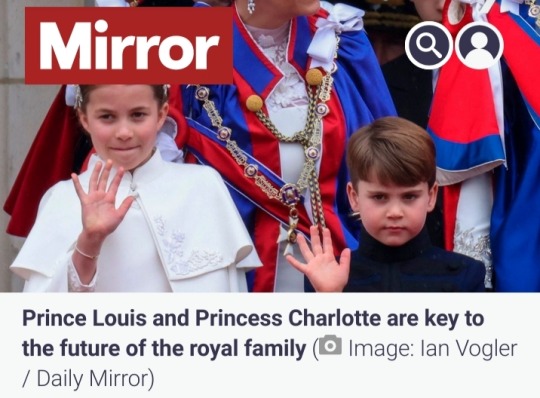
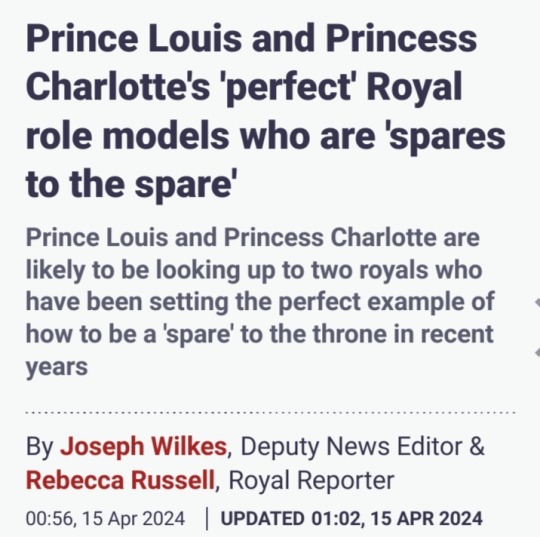
Princess Charlotte and Prince Louis have two "perfect" role models in the shape of two unlikely royals - who are themselves "spares to the spare."
The young royals, who could be considered the "spares" to future King, Prince George, the first born child of Prince Wiliam and Catherine, Princess of Wales, should look to Prince Edward, the new Duke of Edinburgh, and his wife Sophie, Duchess of Edinburgh, for how to go about their life as working royals.
Edward and Sophie have been hailed as the perfect role models for Charlotte and Louis due to their successful roles within the Royal Family.
The couple recently carried out a historic ceremony on behalf of King Charles III, marking 120 years of friendly relations between Britain and France.
Their rise to prominence has been a long time coming, according to former BBC Royal correspondent Jennie Bond.
Jennie told OK!: "They thoroughly deserve the recognition they are now getting."

She added that despite their work often being overshadowed by other royals, they have remained devoted to their causes.
As they take on more prominent roles, they are proving themselves up to the task and serving as excellent examples to their great nephews and niece.
xxx
It is a position which has notoriously come with question marks attached as the Royal struggles to carve out a life for themselves in the shadow of the crown.

Jennie added:
"They [Edward and Sophie] have always been quietly devoted to their various causes, but their work has been overshadowed by other royals.
I suppose every cloud has a silver lining... and as the King calls on them to take a more prominent role, Edward and Sophie are showing they are very much up to the task.
"They are also serving as excellent role models to their great nephews and niece - showing that you can be a 'spare' or even a 'spare to the spare' and make a real success of working as a valued member of the Royal Family."
But among the many benefits of the Prince and Princess of Wales ' preference for gentle parenting directed by what Catherine has learned from her studies of early years education, it is clear that the couple will be striving to normalise their younger children's lives with the hope that they never feel like working as royals is their only option.
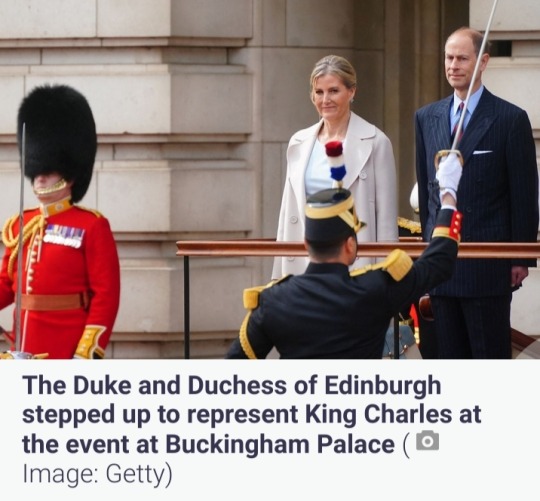
"William and Catherine must be acutely aware of the problems for a royal spare," Jennie explains.
"They have already shown that they have a different and modern attitude to bringing up royal children.
I'm sure they will do everything to make Charlotte and Louis feel every bit as special, loved and valued as George.
I imagine they will encourage Louis to explore life outside the royal fold... it could be the military, but it could also be working in the charity world or whatever he finds appealing after his education is finished.
I'm sure they will encourage him to go to University, which they both enjoyed and where, of course, they found love.
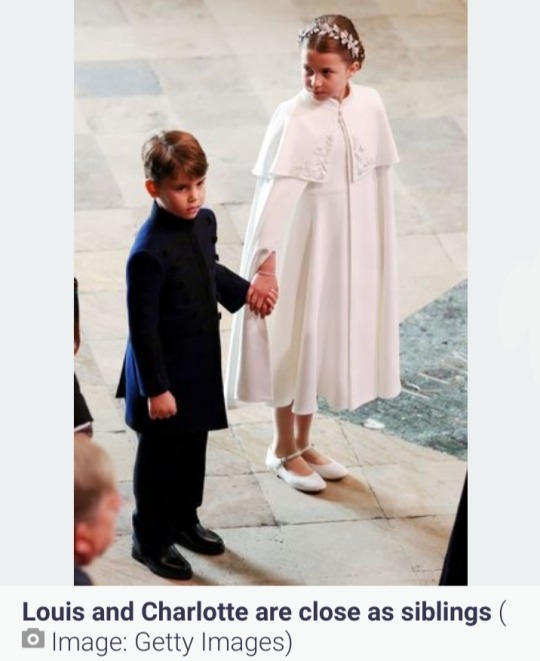
"And from there they will want him to find a life that is meaningful to him as well as appropriate for the son of a future King.
They will try to ensure that he feels he is living a life of value, irrespective of his place in the line of succession.
And that will probably involve service of some kind as they have emphasised from the start that they want their children to understand that having empathy with others is not only a kindness but is rewarding as well."
Edward and Sophie have seen their popularity and recognition within the Royal Family soar over the past 13 months, since being given new titles.
The pair are increasingly front and centre at crucial events, stepping in for the King while he prioritises his health recovery.

Prince Edward is a trusted supporter of the arts sector, taking up his late father's Duke of Edinburgh Awards Scheme mantle.
Meanwhile, Sophie champions gender equality tirelessly, raising critical awareness around issues like female genital mutilation (FGM) and avoidable blindness prevention.
Away from participating in Royal duties or representational roles on behalf of the King, Edward and Sophie, along with their two children — Lady Louise Windsor and James, Earl of Wessex, 20 and 16 respectively — reside at Bagshot Park close to the Windsor Estate, whenever they're not away studying at university or school.

NOTE: Edited (xxx)
#Prince William#Prince of Wales#Princess of Wales#Catherine Princess of Wales#Catherine Middleton#Kate Middleton#Prince George#Princess Charlotte#Prince Louis#Prince Edward#Duke of Edinburgh#Duchess of Edinburgh#Sophie Duchess of Edinburgh#Sophie Rhys Jones#Lady Louise Windsor#James Earl of Wessex#King Charles III#British Royal Family
22 notes
·
View notes
Text
About
24 year old Welsh historian, writer, bibliophile
Currently studying: MA History
Previously studied: BA Ancient & Medieval History
Mostly medieval and early modern history; with a particular focus on medieval Wales & England; some ancient history
History of folklore, the occult and paganism

#writer#historian#historyblr#history student#early modern history#medieval#medievalist#medieval history#ancient history#medieval wales#welsh history
0 notes
Text
THIS DAY IN GAY HISTORY
based on: The White Crane Institute's 'Gay Wisdom', Gay Birthdays, Gay For Today, Famous GLBT, glbt-Gay Encylopedia, Today in Gay History, Wikipedia, and more … March 27



1878 – Henry Davis Sleeper (d.1934) was an American antiquarian, collector, and interior decorator best known for Beauport, his Gloucester, Massachusetts, country home that is "one of the most widely published houses of the twentieth century."
Henry Davis Sleeper was born in Boston. He was grandson of Jacob Sleeper, one of the founders of Boston University as well as a clothier and manager of a real estate trust.
Henry's education appears to have been by private tutors due to ill health as a child, and it is unclear as to whether he was ever formally educated.
Sleeper was introduced to the Eastern Point in Gloucester, Massachusetts, in the spring of 1906 by the Harvard economist A. Piatt Andrew, who later served in the U.S. House of Representatives, who had built a handsome summer mansion, Red Roof, on a rock ledge above the harbor.
Sleeper was much taken by the location and immediately decided to build a little further along the ledge from Red Roof. He purchased the land on Eastern Point in Gloucester on August 13, 1907.In the fall of 1907, construction of Beauport, Sleeper's relatively modestly scaled Arts and Crafts-style house, began and was sufficiently finished to receive A. Piatt Andrew as a house guest in May 1908. As property flanking Sleeper's became available, Beauport was expanded several times until 1925, often in response to events or important experiences in his life.
In 1918, Sleeper became the U.S. Representative of, and a major fundraiser for, the American Field Service, an ambulance corps founded by A. Piatt Andrew early in World War I. While Andrew served in the battle zones, Sleeper crisscrossed the Atlantic with supplies and funds, and worked closely with the French military. France awarded him the Croix de Guerre and the Legion of Honor.
Sleeper had never married and left no direct descendants. His relationship with Andrew, also a lifelong bachelor, was intense, and may have been a sexual one as well.
Sleeper died in Massachusetts General Hospital of leukemia on September 22, 1934, and is buried in his family's plot in Mount Auburn Cemetery in Watertown and Cambridge, Massachusetts. Andrew wrote the memorial tribute published in the Gloucester Daily Times.
Beauport House was declared a National Historic Landmark in 2003. In 2008, due to new information on Sleeper's life emerging, the decision was made to acknowledge his homosexuality in tour guides of Beauport, "not to define Sleeper but to contextualize him."


Portrait of de Maistre by Jean Shepeard
1894 – Roy de Maistre CBE (d.1968) was an Australian artist of international fame. He is famous in Australian art for his early experimentation in "colour-music", and is recognized as the first Australian artist to use pure abstractionism. His later works were painted in a figurative style generally influenced by Cubism. His 'Stations of the Cross' series hangs in Westminster Cathedral and works of his are hung in the Tate Gallery, London and in the Art Gallery of New South Wales. He was very close friends with the Australian writer Patrick White.
From his family's very prominent position in Australian society, he helped to make modern art fashionable in Sydney in the late 1920s, or at least as fashionable as it could be., but the anti-modernist criticism he received following his first one-man exhibition in Sydney convinced him that his art could not flourish in Australia.
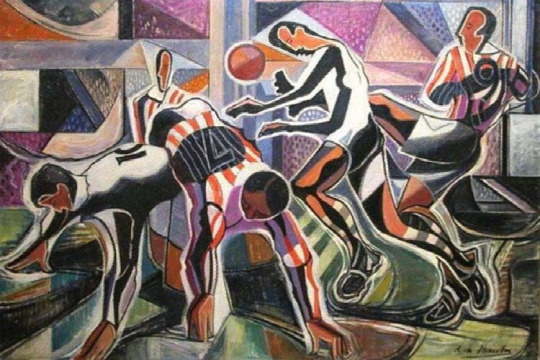
The Footballers
In March 1930 he left Australia to live permanently in London. He held one-man shows at the Beaux-Arts Gallery, London (1930); in the studio of his colleague Francis Bacon (1930); at Bernheim Jeune, Paris (1932); Mayor Gallery, London (1934); and at Calmann Gallery, London (1938).
In 1936 de Maistre met the 18 years younger novelist Patrick White. The two men never became lovers, but firm friends. In Patrick White's own words "He became what I most needed, an intellectual and aesthetic mentor". They had many similarities. They were both homosexual; they both felt like outsiders in their own families (for example de Maistre's family disapproved of his painting and described it as 'horrible'); as a result they both had ambivalent feelings about their families and backgrounds, yet both maintained close and life-long links with their families, particularly their mothers. They also both appreciated the benefits of social standing and connections; and Christian symbolism and biblical themes are common in both artists' work.

de Maistre's portrait of Patrick White
Patrick White dedicated his first novel Happy Valley (1939) to de Maistre, and acknowledged de Maistre's influence on his writing. He even went to St Jean de Luz during the writing of the novel under encouragement from de Maistre. In 1947 de Maistre's painting Figure in a Garden (The Aunt) was used as the cover for the first edition of Patrick White's The Aunt's Story. Patrick White also bought many of de Maistre's paintings for himself. In 1974 Patrick White gave all his paintings by de Maistre to the Art Gallery of New South Wales.
In 1940 de Maistre started work for the French Section, Joint War Organization of the British Red Cross Society and the Order of St John, London. In 1942 he was posted to Foreign Relations Department, British Red Cross Society. During this time de Maistre scarcely painted. After World War II, however, he had become an artist of the establishment. He had no trouble selling his paintings, and continuing to accept private commissions for society portraits. He died in 1968 in London.


Denton Welch: Self-portrait
1915 – Maurice Denton Welch was an English writer and painter, admired for his vivid prose and precise descriptions.(d.1948)
Welch was born in Shanghai and spent his childhood in China — he recorded this in his fictionalised autobiography of his early years, Maiden Voyage (1935). With the help and patronage of Edith Sitwell and John Lehmann this became a small but lasting success and made his reputation. It was followed by the novel In Youth is Pleasure (1943), a study of adolescence, and by Brave and Cruel (1949). An unfinished autobiographical novel A Voice through a Cloud was published posthumously in 1950.
Welch did not set out to be a writer. He originally studied art in London with the intention of becoming a painter. At the age of 20, he was hit by a car while cycling in Surrey and suffered a fractured spine. Although he was not paralysed, he suffered severe pain and complications, including spinal tuberculosis that ultimately led to his early death.
He met his companion, Eric Oliver, in November 1943 while he was convalescing. Oliver was a farm-worker living in Maidstone, and was a regular visitor. He acted as nurse for Welch, then his secretary, and finally as his literary executor when Welch died at the age of 33.
His literary work, intense and introverted, includes insightful portraits of his friends. He continued occasionally to paint; there is a fine self-portrait (in the National Portrait Gallery), and some line illustrations in the first editions of his books.
What is clear from Welch's writing is that his chief limitation is also his chief virtue: his focus on himself. For his time and place, Welch's novels are surprisingly suffused with homosexuality. His examination of the people around him, very thinly disguised in the novels, and his exploration of his own homosexual feelings and responses to the world show Welch to be a writer of consequence, if an over-looked one.
William S Burroughs cited Denton Welch as the writer who most influenced his own work, and dedicated his novel The Place of Dead Roads to Welch.
It may be that his most lasting work will be his posthumously published Journals, in which he is frank about his homosexuality.

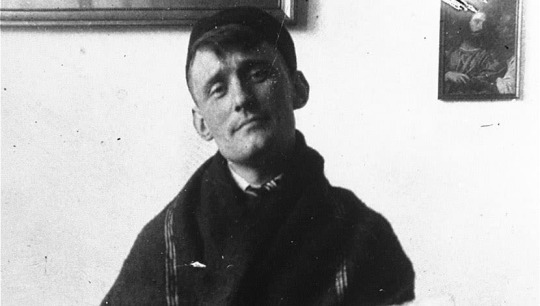
1943 – The Netherlands: A group of resistance activists led by Willem Arondeus, a gay man, dress as German soldiers, infiltrate the citizen registration building, and destroy it, hindering the Nazi German effort to identify Dutch Jews. The attack inspires similar ones throughout The Netherlands. Arondeus was a Dutch artist and author who joined the Dutch anti-Nazi resistance movement during World War II. Arondeus was caught and executed soon after his arrest. He was openly gay before the war and defiantly asserted his sexuality before his execution. His final words were "Let it be known that homosexuals are not cowards".


1963 – Dave Koz is an American smooth jazz saxophonist.
Dave Koz was born in Encino, California to Jewish parents. Although he is Jewish, Koz plays both Christmas and occasional Hanukkah songs at his concerts. He attended William Howard Taft High School in Woodland Hills, Los Angeles, California performing on saxophone as a member of the school jazz band. He later graduated from UCLA with a degree in mass communications in 1986, and only weeks after his graduation, decided to make a go of becoming a professional musician.
Within weeks of that decision, he was recruited as a member of Bobby Caldwell's tour. For the rest of the 1980s, Koz served as a session musician in several bands, and toured with Jeff Lorber. Koz was a member of Richard Marx's band and toured with Marx throughout the late 1980s and early 1990s. He also played in the house band of CBS' short-lived The Pat Sajak Show, with Tom Scott as bandleader.In 1990, Koz decided to pursue a solo career, and began recording for Capitol Records. His albums there include Lucky Man, The Dance, and Saxophonic. Saxophonic was nominated for both a Grammy Award and an NAACP Image Award. In 1994, Koz began hosting a syndicated radio program, The Dave Koz Radio Show (formerly Personal Notes), featuring the latest music and interviews with who's who in the genre. Dave co-hosted The Dave Koz Morning Show on 94.7 The Wave, a smooth jazz station in Los Angeles for six years. He decided to leave the show in January 2007 and was replaced by Brian McKnight. In 2002, Koz started a record label, Rendezvous Entertainment, with Frank Cody and Hyman Katz.
In an April 2004 interview with The Advocate, Koz came out publicly as gay.


Blake McIver Ewing - Then and Now
1985 – Blake McIver Ewing also known as Blake McIver and Blake Ewing, is an American singer-songwriter, actor, model and pianist. He was known for playing Michelle's friend, Derek, on the sitcom Full House. Ewing also portrayed the role of Waldo in the 1994 feature film version of The Little Rascals, and voiced Eugene on Hey Arnold! during its 5th season. He is currently one of the hosts of the Bravo series The People's Couch.Ewing co-wrote and performed the song "Along the River", the end credit song for the film End of the Spear. He has contributed his work to the It Gets Better Project, citing his own experiences as a gay teenager as his motivation. His debut album, The Time Manipulator, was released in May 2014. Throughout 2013 Ewing worked as a go-go dancer in Los Angeles. "The tips were good. In fact, I raised so much money, I was able to finish my record — mission accomplished."
Ewing was nominated for an Ovation Award for his role as "The Little Boy" in the Los Angeles production of Ragtime. He is a graduate of UCLA.
Blake released his equality anthem "This Is Who We Are" on July 14, 2015 and works as a host for AfterBuzz TV.

Blake Mciver Ewing has apparently done a lot of growing up over the years and is now a living his life as a proud gay man. He is also a regular fixture on "The People's Couch," providing witty commentary about television shows and viral clips alongside openly gay entertainer Scott Nevins.
"When I was 14 I came very close to becoming a gay teen suicide 'statistic' but I then turned to music, my piano, my loved ones, and discovered that it does in fact get better," the actor noted in a YouTube description of him performing a poignant anti-bullying song. "But that being said, I believe we must raise awareness to protect the LGBT teens who are still being physically and verbally assaulted and fear for their lives every day. We also have a responsibility to end this suicide epidemic."


2009 – Japan acknowledges its nationals same-sex marriages to foreigners from countries or states where same-sex marriages are legal.


25 notes
·
View notes
Note
hey! im obsessed with arthurs welsh christmas, that fic altered my brain chemistry. im searching currently, but i was wondering if you could rec any more of your merthur fics that are similar? (I think i specifically enjoyed arthurs pov and the whole low stakes of it all, just them falling for eachother.) it was so lovely. thank you for your help and also for writing such an incredible story, should be a real hallmark movie tbh.
Omg this was such a nice ask to see! If you’re looking for similar things, right off the bat would be
A B&B Romance in Modern Wales
Arthur Pendragon works sixty hour weeks and is devoted to his family name, until one night Uther goes just a bit too far. Restless and confused, Arthur gets into his car and drives until he can't. It is the middle of the night in a small village in Wales, and a helpful officer directs him to a B&B for the night.
There he finds a kindly innkeeper, his very weird historian gremlin nephew, odd people, odd situations, and even odder - himself.
A slightly absurd and very gentle story about coming back to yourself, finding a true family, and realizing that historian gremlins are actually really hot and rather amazing, and perfect to fall in love with.
That’s the most similar to Welsh Christmas. Features small quirky town, low stakes, and falling in love.
There’s also
Then and Now
Merlin skips a year of school when he is seven and ends up in Year Four instead of Year Three. The older kids all pick on him and the worst is by far Arthur. A stolen book brings Arthur and Merlin together, and they become best friends. Sadly, nothing they do can stop Arthur from being sent away.
Morgana pressures Arthur to hit on a guy in the pub. He does it to shut her up, but it turns out Emrys is actually a lot of fun to be around. One date turns into many. Arthur has never been happier.
Seems like fate had something else in store for Arthur and Merlin after all.
It’s a shorter fic, but you get childhood cuteness and then grown up flirtation and dating.
The Ethics of Sleeping with a Hot Stranger
In which Merlin meets Arthur at a club and goes home with him, only to find out that Arthur's occupation is less than undesirable. Good thing he has supportive friends who won't at all roast him for his poor life choices.
Merlin finds out Arthur is a cop and has a small crisis about it. But it ends in fluff and explanation of Arthur’s poor choice in career.
The Boy I Love, He Got Wavy Black Hair
Merlin heads out early one morning to help Lancelot in his classroom. When he meets Arthur at his office for lunch, his hair is different. Arthur is not a fan.
This one is a bit different since it’s established relationship, but Merlin catches lice. Much Arthur dramatics and teasing ensue.
Lastly, if you’re willing to go outside of straight up modern au, there is
You Hear Him Howling Outside Your Kitchen Door
Merlin thought a type-a student trying to break into his office to replace a section of an essay would be the strangest thing to happen to him, but then a man shows up on his doorstep naked and seemingly drunk. Giving that man a helping hand opens up the door to a strange hidden part of society in London. There is a group of lads who all live together and take way too much enjoyment in playing football together, but there is something more to them than meets the eye. Merlin just hopes it won't affect his growing relationship with their unofficial ringleader Arthur Pendragon.
It’s an urban fantasy au where all the knights are werewolves. It’s still got that fluffy falling for each other low stakes romcom vibe, but there also happens to be werewolves.
I hope these give you something to start with @isuckatbeinghappyallthetime! Thank you so much for reading my fics and for asking for more! That means so much to me!
#bbc merlin#merlin#merlin fic rec#bbc merlin fic#bbc merlin fanfic#merthur fanfic#merthur fic#merthur#my fics#merlin/arthur#merlin x arthur
68 notes
·
View notes
Note
I have been trying to find an answer online but I can't quite find what I'm looking for, if you don't mind can you help provide some insight?
Basically my question is did the medival people of Ireland honest to god believe in pseudo historical texts like the Book of invasions and related traditions. Like they believed in 6 waves of people coming to ireland under Christian cosmology.
Or was this more of a literary tradition for generally understood to be fictional or not quite accurate stories?
So it's been. Months. But if it's any consolation, this DID thoroughly haunt me!
I also cleared it with a colleague of mine who does work on like. Medieval Irish conceptions of history, so it's been vetted by Someone Who Is Not Me, at least the rough outline (I am NOT showing them my Tumblr, god forbid.)
And...for the most part? Yeah. They did. They sometimes argued FIERCELY over little details, like the Tuatha Dé coming in a cloud of mist or whether or not they burned their ships, or whether they were doing it to get away from Lugh. They cited texts that they thought were particularly authoritative, like the Holiest of the Holies, the now-lost Cín Domma Snechtai, they refuted other scribe's suggestions, sometimes very aggressively. I mean, you have scholars into the 20th century believing in this, at least to some extent or another, like Eoin MacNeill in his Phases of Irish History (1919) or T.F. O'Rahilly in his Early Irish History and Mythology (1946). Obviously not in terms of like. The Tuatha Dé as a supernatural race of people, but in the sense of what might best be described as extreme euhemerization, using these medieval texts as a way of trying to unveil a lost Irish pre-history. (It goes without saying this is NOT my approach and not how most of us approach the field, but it was quite common decades ago.)
Geoffrey Keating, in the 17th century, would write his History of Ireland, which used LGE as one of its key pieces of evidence in his attempt to hit back against less than savory accounts by anglophone scholars, of Irish history. "LOOK at our history, LOOK at our glorious past, LOOK at what we can do." It's imminently sympathetic, honestly. (Though Geoffrey shouldn't be taken to be credulous -- he explicitly says that Cath Fínntragha, for example, was not to be taken as a true historical account.) There's a bit, perhaps slightly amusing by modern standards, in his prologue where he says, "Cambrensis [Gerald of Wales], who undertook to give a correct account of everything, appears to have received a medley of fables from some dunce or blind man, for he has said nothing of the conquest of the Tuatha-De-Dananns, who possessed Ireland one hundred and ninety-seven years, during which time nine kings of their nation rules the island."
This is a man who does, firmly, believe in what he's saying and in the veracity of the sources that he has. We also see LGE and the pseudohistorical scheme in general being adopted by Keating's contemporaries, such as Dubhaltach mac Fhirbhisigh (Leabhar na nGenealach) and Roderic O'Flaherty (Ogygia), some of the best scholars of their day and men who...this is my bias speaking, but I trust them. Especially Dubhaltach. I don't have my copy to hand, but the way he speaks about his sources, the way that he's willing to argue with them even as he includes them in his work...I believe him. Or. Let me rephrase that. I believe that HE believed in what he was saying, and I believe in his integrity as a scholar. They're men who absolutely have an angle! But they're men who are using the sources that they have to defend their country from some truly awful slander using the best materials they have at the time, as methodically as possible.
Charles O'Conor, one of the, in my opinion, crucially overlooked scholars of the 18th century, a man who the field owes a massive debt to for his activism and his large collection of manuscripts (some of which, through a story I'll tell sometime if anyone's interested, become the Stowe Collection), was skeptical, saying that Keating's work, "Is a most injudicious Collection; the historical part is degraded by the fabulous, with which it abounds. Keating was one of those laborious Readers, who, in making Extracts, do it without Selection or Discernment; and suchWorks (as the judicious Mac-Firbis observes -- ought never to be published." Personally, while I appreciate boosting Dubhaltach and his work, I think he's too harsh on Keating. It's very easy to judge someone's scholarship when you're living a century ahead of them. He is much more skeptical than Keating, trying to compare native sources up against other contemporary histories of Europe, but he DOES still use LGE as a vital source -- he doesn't discount it or its invasion scheme entirely. He is still very much treating it as a historical document, albeit one that he doesn't fully believe in. (Especially since he's kind of fighting with James MacPherson, of Ossian fame. Because apparently getting into massive public debates with people whose work is enjoying a lot of popularity and that we think involves shoddy research is a time honored tradition in the field.)
But there is a reason why it gets picked up, even into the 20th century, because when you've had your history continually belittled and marginalized, when your language has been driven to the point of near extinction, when you are constantly told that you don't HAVE anything worth being proud of, not compared to the Grand History of England or the classical tradition, that you're a nation of barbarians and beggars...of course you want to believe in it. Of course you want to believe that you can salvage SOMETHING. Especially since these are your ancestors saying it. Your ancestors, reaching across this seemingly insurmountable chasm of time, telling you "look, this is your history." Do I think everyone in medieval Ireland agreed with it? Probably not. There was probably at least one person who was like "well...do we KNOW, though?" In the same way as there were very likely people who thought "King Arthur...did he exist?" Or those oddballs in the modern day who claim the Roman Empire didn't exist. There are always going to be people who are a little skeptical, even of what are the generally accepted truths of a certain time period, but I would say that in general? The trend we see is broad belief, because this is the best historical source that people had for centuries -- they had no reason to strongly doubt it, even if they argued over the details.
#geoffrey keating#charles o'conor#dubhaltach mac fhirbhisigh#the mythological cycle#lebor gabála érenn#irish mythology
40 notes
·
View notes
Text

Travel back [...] a few hundred years to before the industrial revolution, and the wildlife of Britain and Ireland looks very different [...]. [B]etween 1529 and 1772 [...] [i]n the early modern period, wolves, beavers and probably some lynxes still survived in regions of Scotland and Ireland. [...] [T]he now globally extinct great auk could still be found on islands in the Outer Hebrides. [...] [A]nd pine martens and “Scottish” wildcats were also found in England and Wales. [...] [B]urbot and sturgeon in both rivers and at sea [...] [and] threatened molluscs like the freshwater pearl mussel and oyster were also far more widespread. [...] [S]everal species of wolf have gone extinct [...]. The capercaillie is [...] [t]oday [...] found only rarely in the north of Scotland, but 250-500 years ago it was recorded in the west of Ireland [...]. [B]y the end of the 18th century, sea eagles were essentially extinct across England and Wales. [...]
The Powte’s Complaint is a protest ballad probably written in 1619 to bewail the drainage of the Fens around Ely and Wisbech in Cambridgeshire.
Attributed in one manuscript to a “Peny” of Wisbech, it is written from the perspective of a burbot, a freshwater species of cod commonly found in the Fens at this time. (This fish is now nationally extinct, but may be soon be reintroduced.)
The ballad summons the “brethren of the water” – probably meaning local people as well as fish and other animals – to fight against the drainage scheme, which sought to create new pasture land:
Come, Brethren of the water, and let us all assemble,
To treat upon this matter, which makes us quake and tremble;
For we shall rue it if ’t be true that Fenns be undertaken,
And where we feed in Fen and Reed, they’ll feed both Beef and Bacon.
According to research by Todd Borlik and Clare Egan, the subject of complaint here was a plan to cut a canal through an area of common land south of Haddenham. This scheme would remove the ability of local people to catch fish, and also to transport their produce and fuel on the water. Protests against the scheme apparently culminated in a demonstration of some 2,000 people who lit bonfires, banged on drums and fired guns all night during a meeting of the Commission of Sewers in 1619.
Within the poem, the alliance of the “brethren of the water” seems to recognise the interdependence of humans and wildlife on each other, and on the environment of the Fens.
A comparable example [...] is the Welsh poem Coed Marchan (Marchan Wood), written around 1580 by Robin Clidro, a wandering poet from the Vale of Clwyd in Denbighshire, known for his humorous rhymes.
Clidro’s poem tells the story of a group of red squirrels who go to London to present a petition against the felling of Marchan Wood for charcoal. As with The Powte’s Complaint, the use of the squirrel as narrator is a conceit, and the poem is really a protest against deforestation on behalf of human interests. But again, the author re-imagines the world from the perspective of animals:
Odious and hard is the law, and painful to little squirrels. They go the whole way to London, with their cry and their matron before them. Then on her oath she said, “All Rhuthyn’s woods are ravaged; my house and barn were taken one dark night, and my store of nuts.” The squirrels all are calling for the trees; they fear the dog.
---
Image, caption, and text by: Lee Raye. “Wildlife wonders of Britain and Ireland before the industrial revolution – my research reveals all the biodiversity we’ve lost.” The Conversation. 17 July 2023. [Bold emphasis and some paragraph breaks/contractions added by me.]
56 notes
·
View notes